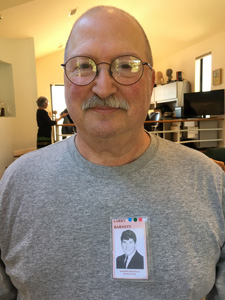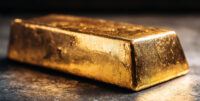 I recently went back east to attend my 50th high school reunion. I’ve attended other reunions; the 20th and the 40th, so I’ve had contact with some classmates over the years. This time, however, quite a few former students showed up who have never attended a reunion before. Accordingly, I had a glimpse of the experience called prosopagnosia, what neurologists have named the inability to recognize faces.
I recently went back east to attend my 50th high school reunion. I’ve attended other reunions; the 20th and the 40th, so I’ve had contact with some classmates over the years. This time, however, quite a few former students showed up who have never attended a reunion before. Accordingly, I had a glimpse of the experience called prosopagnosia, what neurologists have named the inability to recognize faces.
Admittedly, over the period of 50 years some faces had changed greatly; time is gentle with some and far less gentle with others. To help us, everyone wore a badge with their photo from our senior year high school yearbook, but even this did not always make a difference.
Neurologists differ in their opinions about how the brain recognizes faces. All seem to agree that some capacities are inborn and displayed soon after birth; imitating facial expressions is common among infants. The ability to remember faces, however, takes more time to develop. It appears that various areas of the brain are used to build and store face recognition, and that both semantic and emotional memory are employed in this process. A portion of the temporal lobe appears to be particularly important, so important that it’s referred to as the “fusiform face area.” The amygdala, an emotion-regulating portion of the brain, is also highly activated.
In face recognition, different portions of the brain appear to respond to particular portions of the face, and this brain network “builds” the whole from these “parts.” Thus the experience of looking at a face, sensing familiarity but not being able to put a name or certainty to it, is often followed by a sudden “snap” of recognition in which it all comes together in a rush of cognitive and emotional realization.
For me, this experience was marginally hallucinatory. As the pieces came together I seemed to actually see the face of 50 years ago come to the surface of today’s face, and then, like a movie’s special effects, blend and morph into a firm and stable vision. It was both fascinating and a bit disconcerting to watch my own brain at work as it put the old and updated “pieces” together.
I then would experience the semantic effects of facial recognition; expressions, gestures and memories all flooded into consciousness alongside the three basic feelings of attraction, aversion and neutrality. Towards those who had been close friends, feelings of genuine warmth and affection arose, and conversely, towards those with whom my relationship had been difficult, feelings of caution arose. Towards those I did not know well, I felt the sort of curiosity one feels towards strangers.
Including kindergarten, I’d been in the same school and classes for thirteen years with a number of people at the reunion, and they feel almost like family. We know each other right down to our bones, having grown from little more than toddlers to young adults together. Time and circumstance had separated us, yet an easy comfort borne of childhood intimacy erased the years in a flash.
Together we had cried, been angry, gleeful, hurt, expectant, jealous, kind and mean; the intimacy of growing up together is not unlike the intimacy of family. In some sense, I felt naked and exposed at the reunion; my classmates, after all, had seen all of me, inside and out. And I’d seen inside them as well; being together again felt nothing less than heartbreakingly glorious.





Larry, I had the exact same experience at my 50th a few weeks back. No recognition at first and then after a few moments of conversation they all magically turned into the person I knew in high school. I noticed the phenomenon but just didn’t have a name for it.
Yes, it was interesting to watch my own mind at work as it “put the pieces together.” And “prosopagnosia” is quite the word!